I swapped my Apple Watch for a vintage Casio Chronograph – here are 8 surprising things I learned
A time-capsule time machine
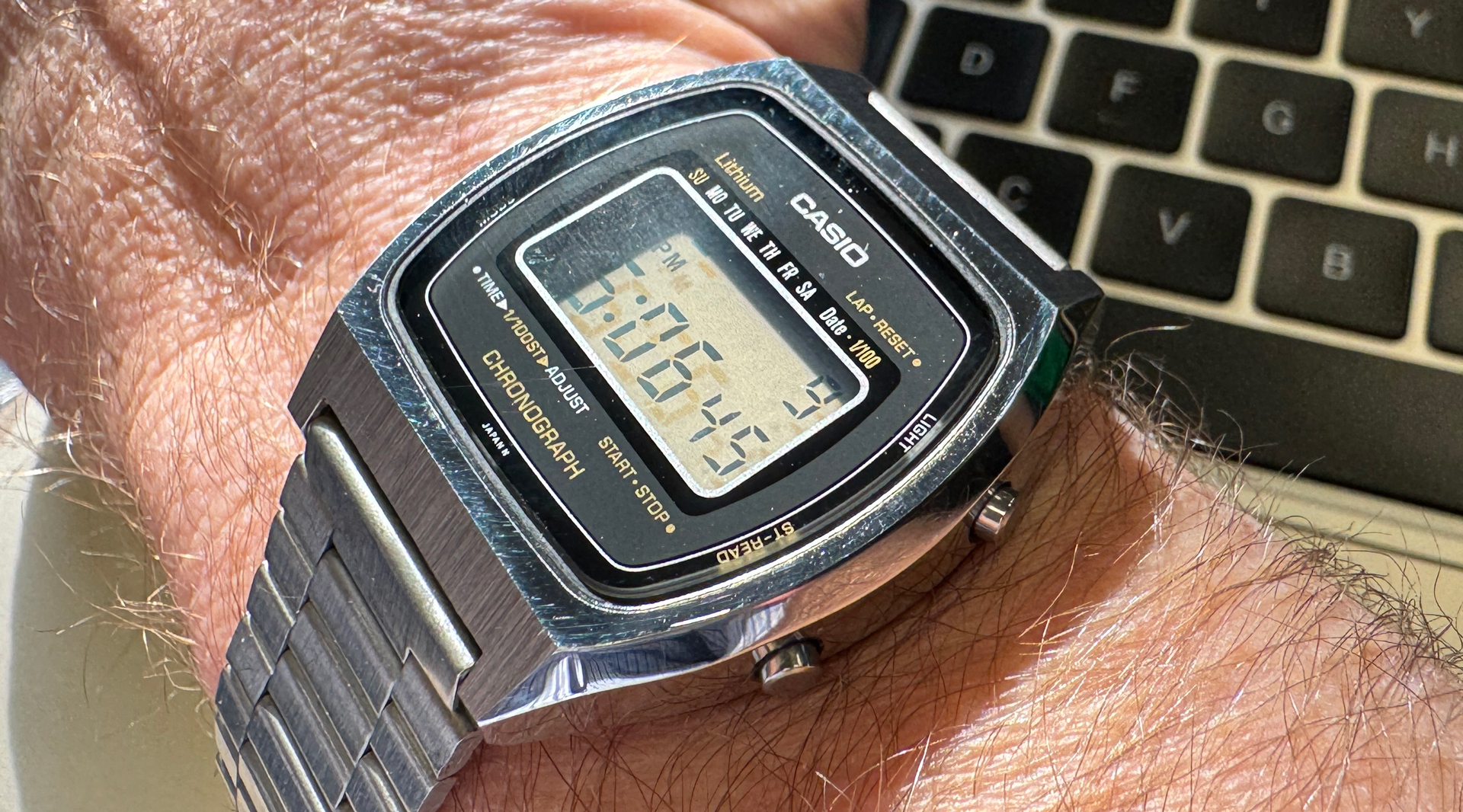
I live in Apple's world. I use an iPhone 15 Pro Max as my main smartphone, work on a lovely and fast MacBook Air 13-inch M3, occasionally work or watch movies on the Vision Pro, and wear an Apple Watch Series 9 almost 24/7.
If I didn't need to charge Apple's powerful smartwatch, I would wear it non-stop, but it usually needs juicing up after a day and a half on my wrist. Other than my shower, that one-hour top-off is the only time I'm not wearing the watch that's capable of tracking my activity, workouts, general health, and sleep. That changed last week, however, when I swapped it for a Casio LCD watch.
Before you assume that I'm one of those nostalgia-obsessed TikTok kids, you should know I'm an AARP member who collects watches and has a certain affection for late-20th-century consumer electronics.
Yes, I took note of the rising interest in Casio's still formidable collection of LCD chronographs, and I was surprised to see some people wearing them. Even our own smartwatch guru Matt Evans recently sang their praises. Part of the reason is that you can buy a decent Casio Stainless Steel Alarm Chrono for $20. That's a great price for a timepiece of any stripe.
Before you assume I'm one of those nostalgia-obsessed TikTok kids, you should know I'm an AARP member who collects watches and has a certain affection for late-20th-century consumer electronics.
For a time, I considered buying one for myself before I realized that I might have one squirreled away in a drawer somewhere.
When I say drawer, I mean my more than half-dozen drawers full of classic watches, spanning from late-1800s pocket watches to mid-19th century windables and automatics. There's also a healthy number of mid-1970s and mid-1980s digital watches. The ones from the '70s are the first LED models, which offered red plastic faces through which you could see a Back to the Future Delorean Time Machine-style time and date readout. These are in high demand, but I can tell you from experience that few of them are still functional.
LCD watches supplanted the LEDs because they could be viewed without a special filter, and were much more battery-efficient. I still remember my father making multiple trips to the watch store to get new batteries for his pricey, first-generation LED watch.
Get daily insight, inspiration and deals in your inbox
Sign up for breaking news, reviews, opinion, top tech deals, and more.
Timex and Casio were leaders in the LCD space, and I'd argue that Casio's early 1980s Chronographs set the model for all LCD watches, Casio and others, to come.
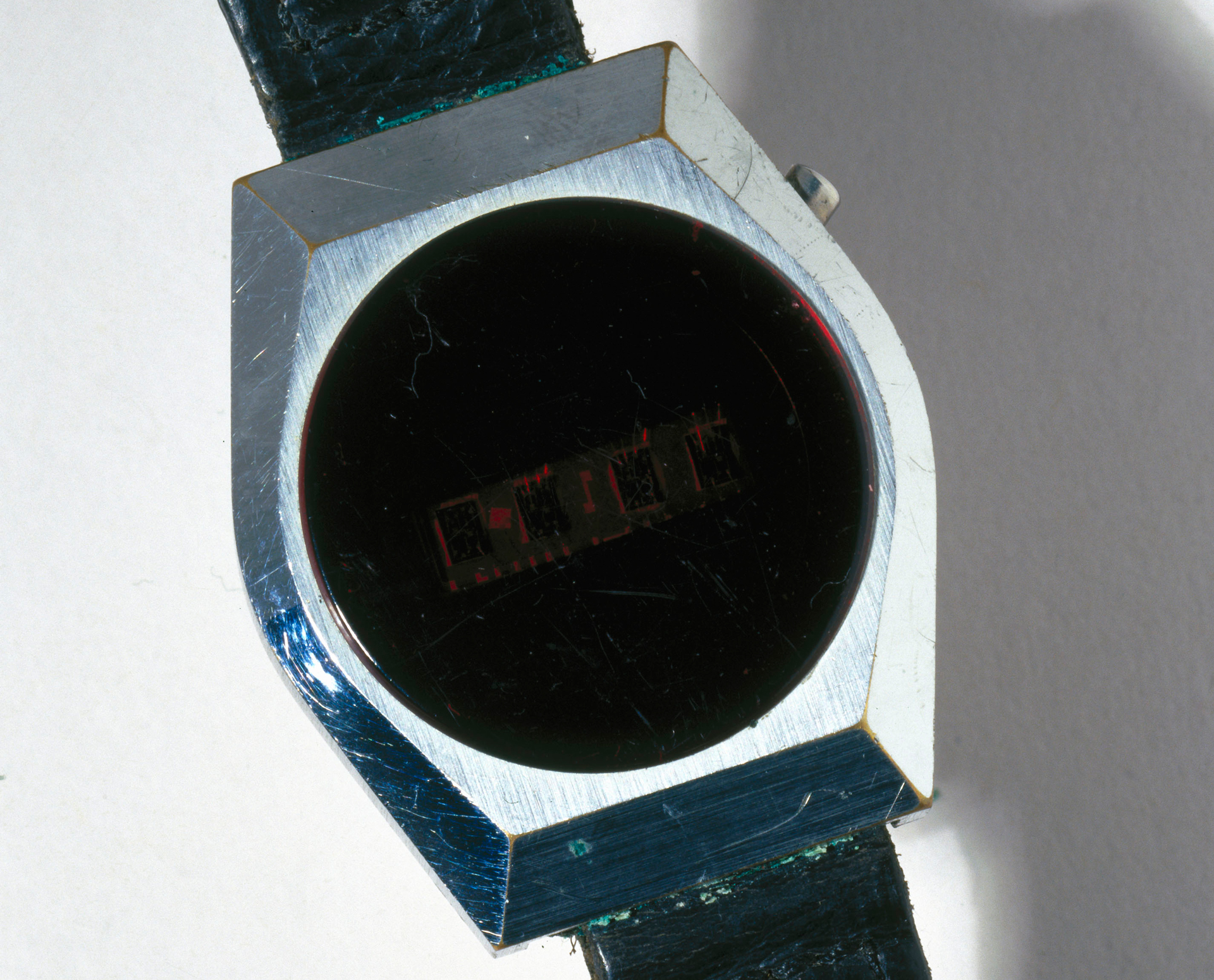
While digital, none of these classic timekeepers were what you'd call smart. They have time, date, alarms, even tiny, built-in calculators, and some water resistance, but none offer apps, intelligence, or touchscreens. Even today, the Casio Alarm Chrono is a dumb-screen, three-button number, and you use those buttons not to summon Casio's answer to Siri, but to turn on the backlight, launch a stop watch, or set the time.
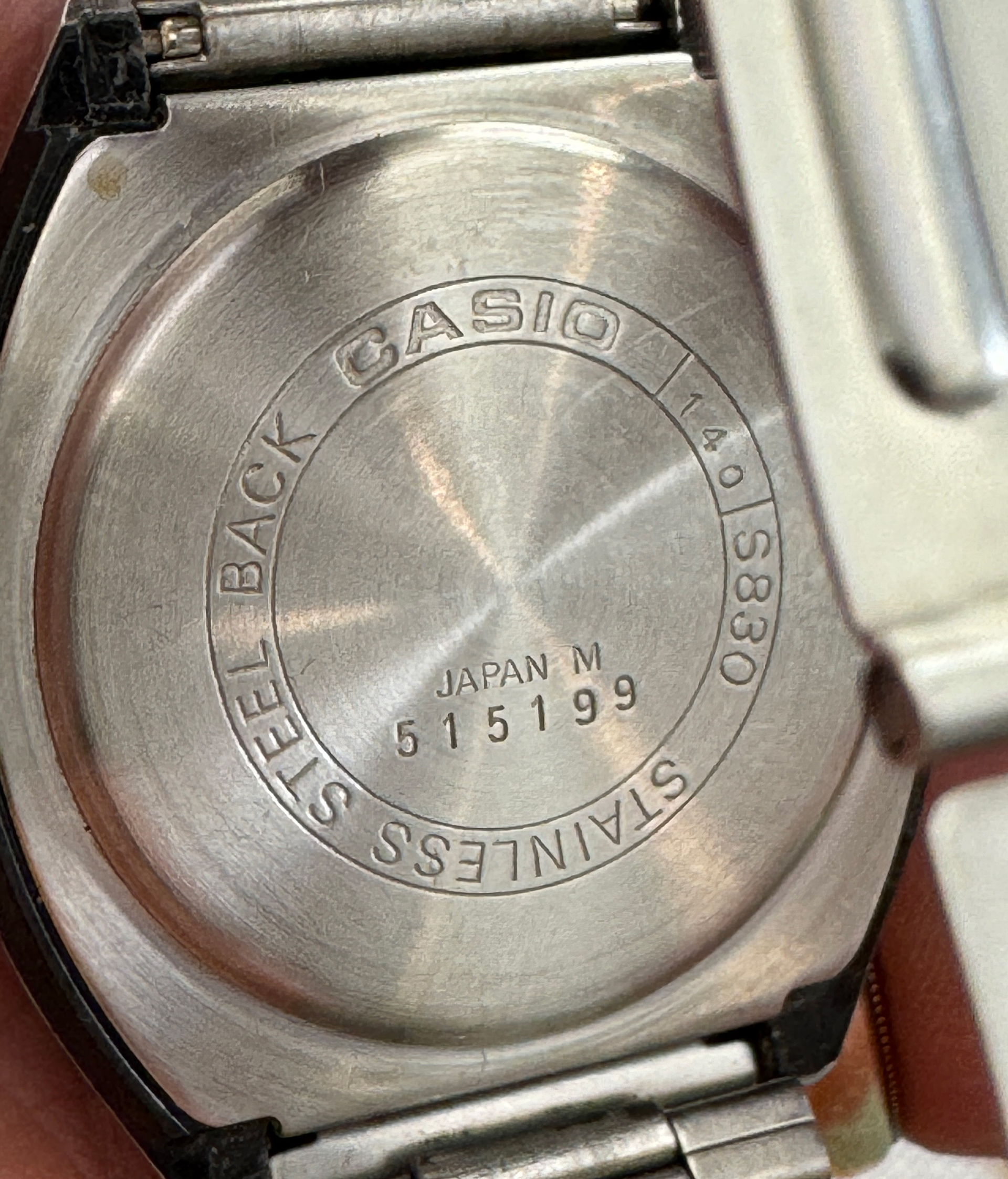
Recently, I dug through my piles of unused timepieces and found my own classic Casio Chronograph, Model 140 S830. Even though it's from somewhere in the early-to-mid-1980s, and probably 40 years old, it was in remarkably good condition. The glass screen was unblemished, the print below it looked perfect, and the screen, though off, looked intact. There was a watchband on it, but it was the wrong shape and model. I found a better fit attached to another older and more roughed-up LCD watch (not a Casio) and swapped it in.
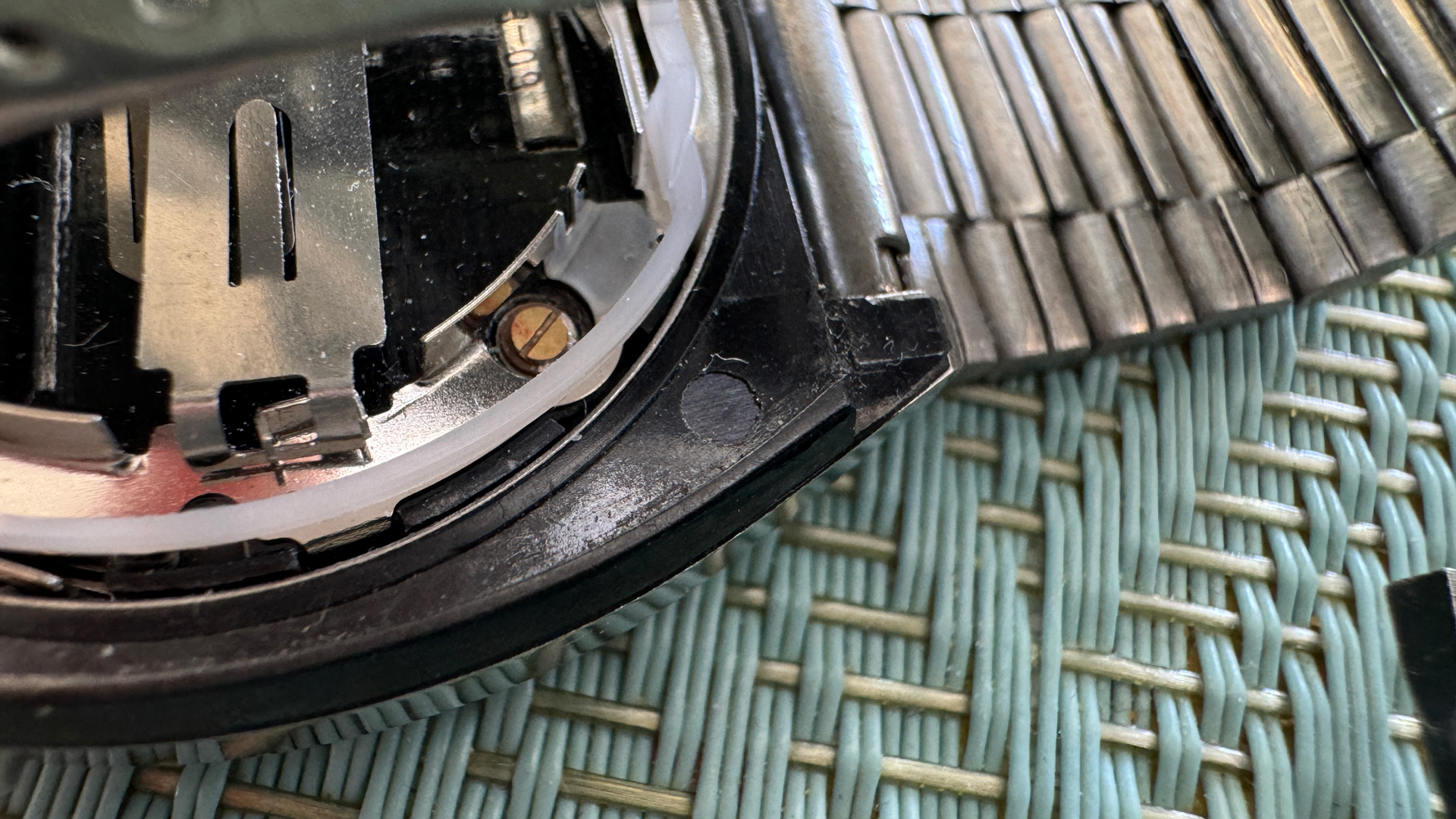
At this stage I was just curious if the watch still worked, and I had no intention of taking off my Apple Watch.
Unlike current Casios, on which the back is secured with four screws, this Casio watch back popped off with the use of a tiny flathead screwdriver, revealing a clean, empty battery space.
I spent the next two hours examining the watch, and looking online for any reference to which quarter-sized battery it took. I could not find anything, but then I decided to see which battery current Casio Chronos watches use, which in some cases is the CR2016 lithium coin battery. I went to a local CVS where I found one CR2016 alongside a bunch of CR2025 (favored by remote and car ignition fobs) and CR2032 (used in AirTags). The CR2016 is much thinner than either of those batteries, and seemed like it might be fit.
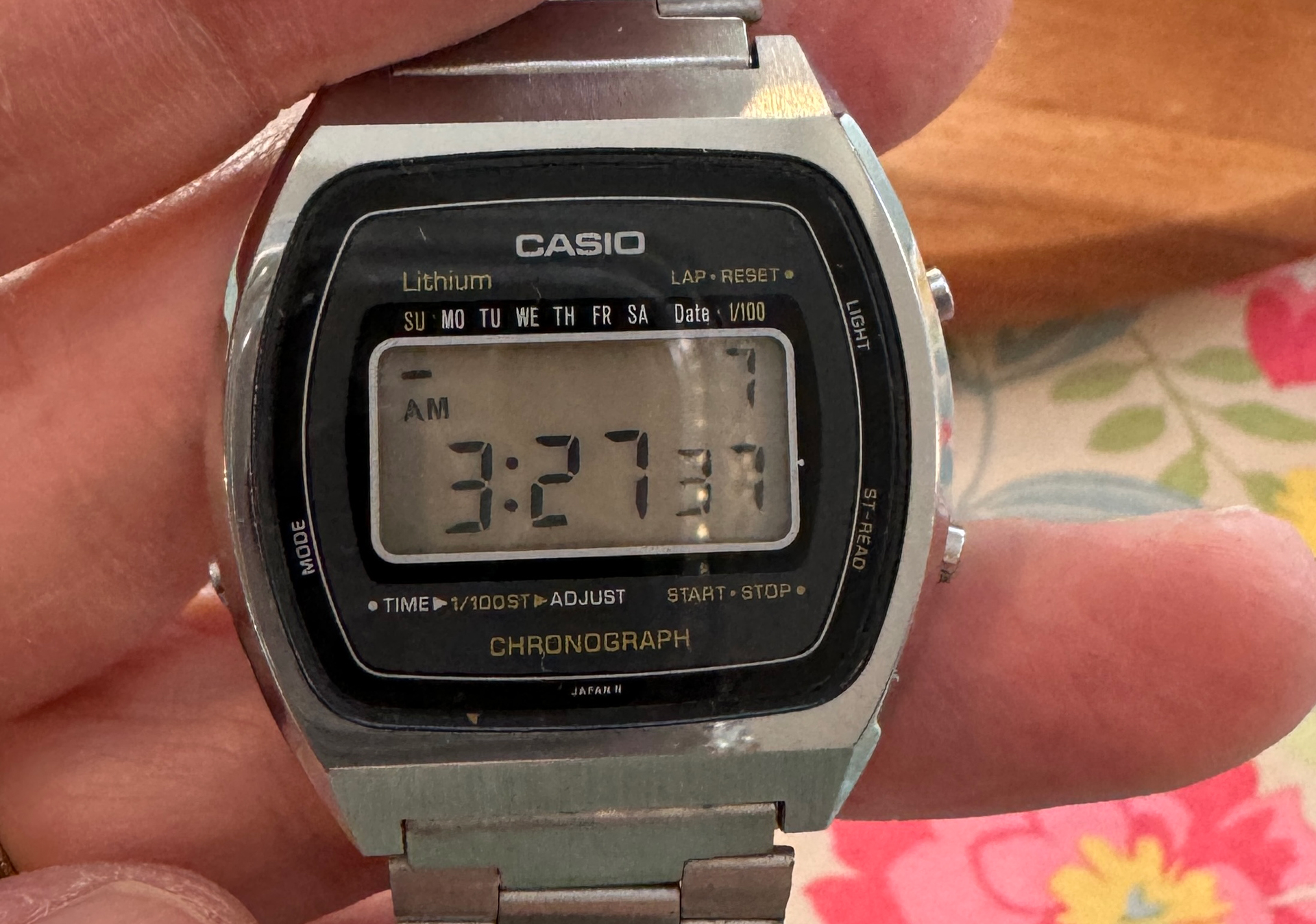
I bought the $7 power source, and was soon back home dropping it into the watch's back. At first, nothing worked, but that was because the watch body had become dislodged from the metal chassis, and all the buttons were now out of alignment. I managed to reseat the whole thing, close up the watch, and, viola!, a functioning Casio Chronograph.
It took me a moment or two to figure out how to set the watch, but I was pleased to see that when I set the month and date, the watch knew the day of the week (20th-century programming for you). I adjusted the stainless steel watchband for a better fit, and then I slid off my Apple Watch and put on the vintage Casio.
What I learned
The slim down
Some of my favorite analog watches were the thin, elegant, and expensive timepieces from Longines and Tissot. I gave them up when I adopted the 10.7mm thick Apple Watch. Granted, there are a lot of thick, dumb watches, but they never appealed to me. The Apple Watch isn't like that. I've always believed the thickness tradeoff for all that on-wrist intelligence was worth it.
Still, this Casio is so thin and light I never feel it on my wrist.
The dumb-down
A font of information my Casio chronograph is not. In 1984 or thereabouts, a watch that could tell you the time, date, and day of the week was enough, Nowadays, if it can't tell me the capital of Arizona, and in its own voice, what's even the point of its existence?
Weirdly, I don't miss all the information, notifications, and weather updates. A lack of constant wrist-bound alerts is kind of freeing, and now I find myself only looking at my wrist when I don't know the time or date – which is not as often as I thought it would be.
The long tail of sense memory
I still feel wrist vitiations and bumps. That's right, the Casio Chronograph doesn't have a motor or any kind of haptic alert system, but some misfire in my brain is still making me feel those things on my wrist. I have to assume that if I wear this thing long enough I'll stop feeling those phantom vibrations.
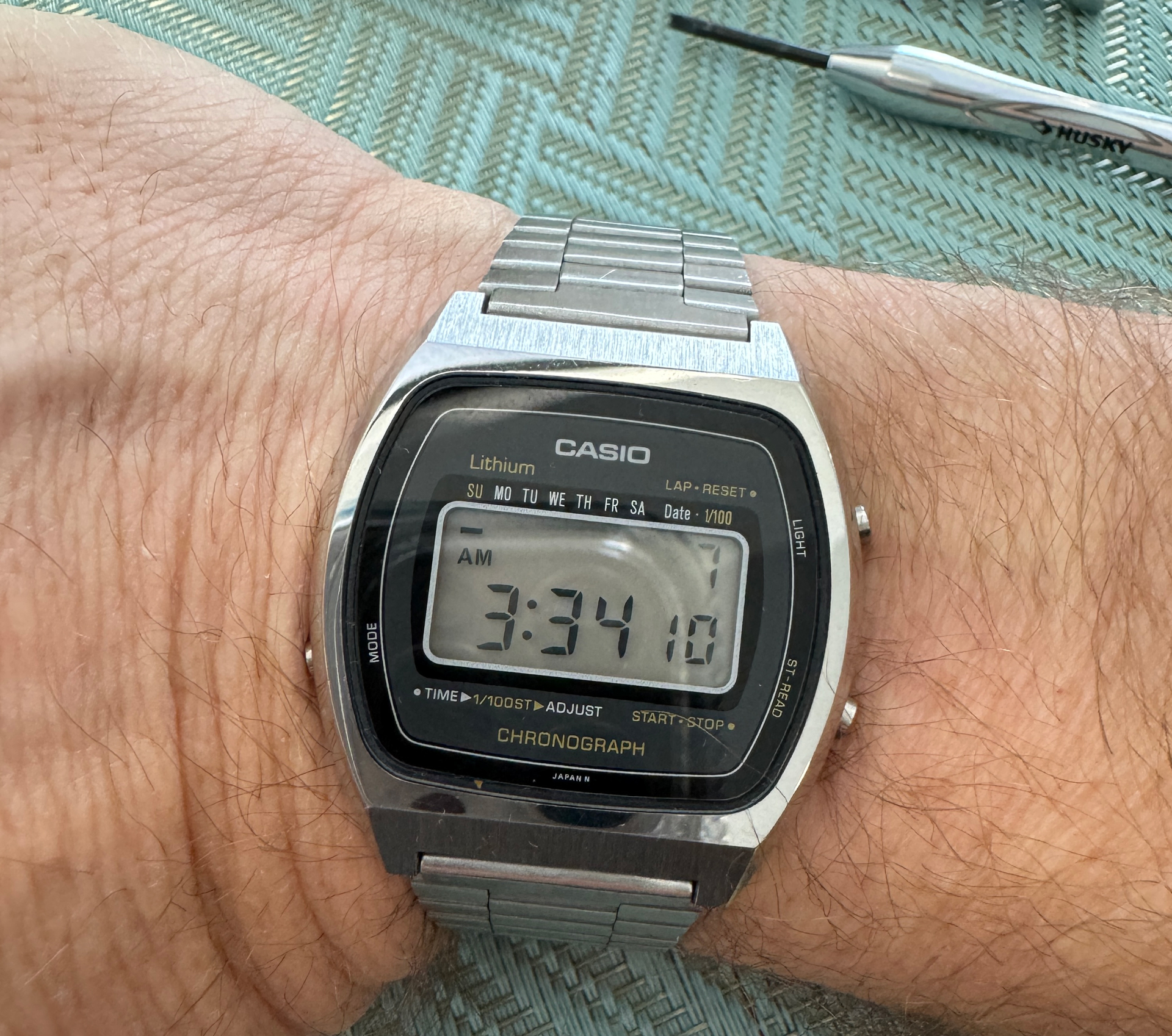
Charge what?
The Casio Chronograph could run for two years with this one battery. Having one less thing that I have to remember to charge is undeniably awesome.
Don't know much
Yes, I lifted my wrist the other day to tell my Casio Chronograph to set a timer. And, yes, I was glad no one was watching me. Similarly, I can't unlock my MacBook with my Casio, and there's nothing on my wrist that notices when I take an extra-brisk walk to work that might count as an outdoor workout.
My classic Casio also lacks:
- Health tracking
- Steps tracking
- Activity Tracking
- ECG monitor
- GPS
- Wi-Fi
You get the picture. This is a basic watch, but with a digital heart.
Does anybody really know what time it is?
The Casio watch may know the date, but its time accuracy is only as good as yours. First, I mistakenly left the Casio on AM time when it was PM, which would have meant the watch didn't change the date at midnight. Second, I set the time based on what I saw on my oven clock. The clock has a lot more in common with my Casio watch than it does with the Apple Watch – neither one is connected to an iPhone or network where it can get the exact time – so for now my Casio Watch is always two minutes ahead, which at least helps me to be on time.
Yes, I lifted my wrist the other day to tell my Casio Chronograph to set a timer. And, yes, I was glad no one was watching me.
The big caveat
One of my favorite things about the Apple Watch is its ability to track my workout and sleep. I've been sleeping with the Apple Watch Series 9 for months, and I love it when it tells me I've met my sleep goals. I struggled for days with what to do about sleep and exercise tracking during my watch-swap experiment.
In the end, I decided to wear the Apple Watch for both activities. At the end of each day, I grab the Apple Watch off the charger and wear it to bed, and it stays on during my morning workout. After that, I swap it for the Casio and begin my day.
It later occurred to me that If I switched to one of the best smart rings, I wouldn't need to wear my Apple Watch during sleep or workouts.
One less screen
My vintage Casio Chronograph LCD watch is far from a perfect replacement for my Apple Watch, but then how could it be? These watches were designed and built at least 31 years before I wore my first Apple Watch. Our needs were simpler, our transistors were larger, and our programming was less accomplished.
As much as I miss wearing my Apple Watch (especially my Snoopy watch face), I don't miss the extra screen. It's just a tiny bit less distraction in my life.
I haven't truly given up on the Apple Watch; I've just taken a break, and reminded myself that I can survive without its constant prompts about my life and the world around me, and nudges to stand up. My Casio Chronograph is happy to sit with me, on my wrist and be perfectly quiet. You know, the way watches used to be.
You might also like

A 38-year industry veteran and award-winning journalist, Lance has covered technology since PCs were the size of suitcases and “on line” meant “waiting.” He’s a former Lifewire Editor-in-Chief, Mashable Editor-in-Chief, and, before that, Editor in Chief of PCMag.com and Senior Vice President of Content for Ziff Davis, Inc. He also wrote a popular, weekly tech column for Medium called The Upgrade.
Lance Ulanoff makes frequent appearances on national, international, and local news programs including Live with Kelly and Mark, the Today Show, Good Morning America, CNBC, CNN, and the BBC.